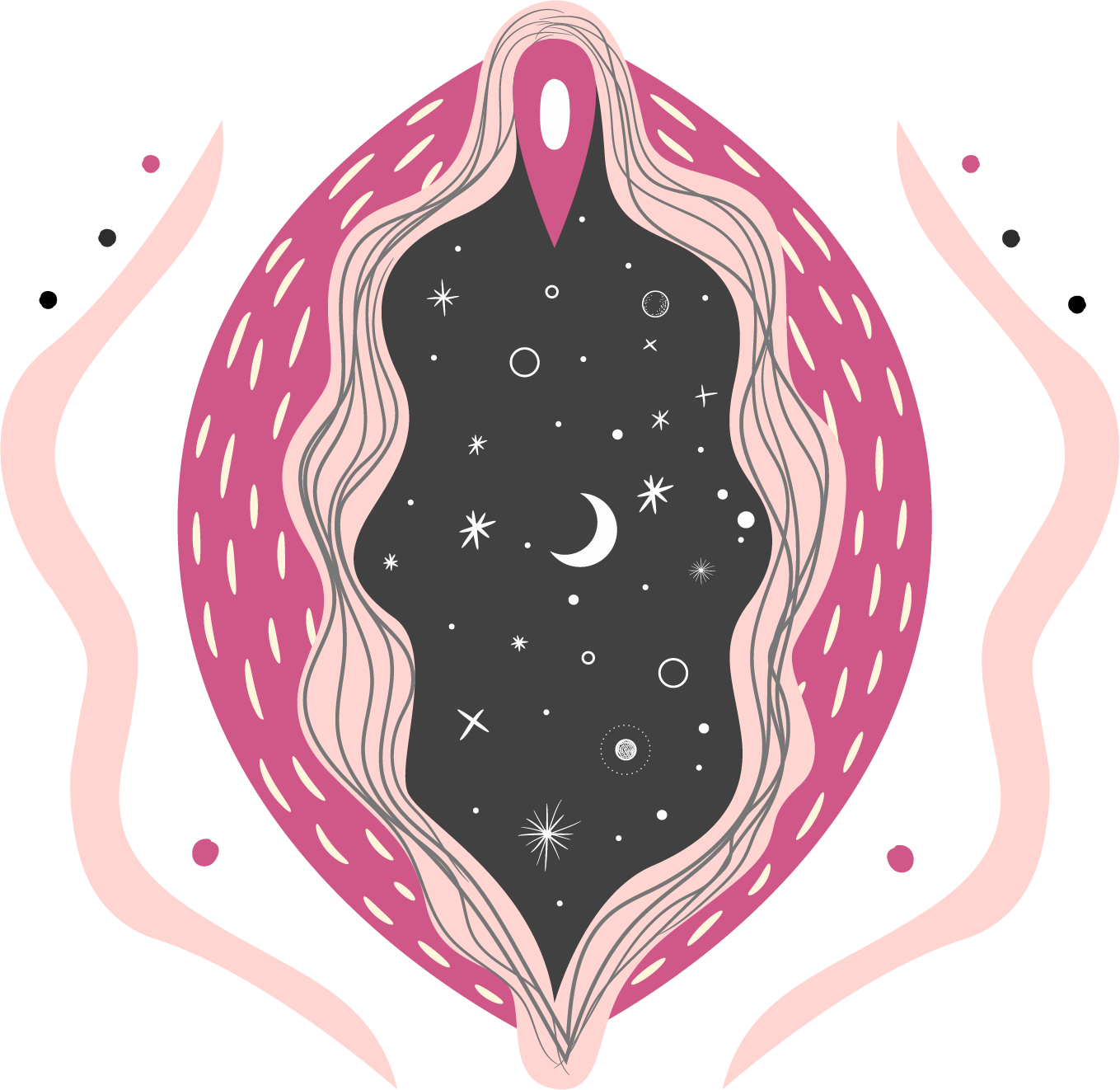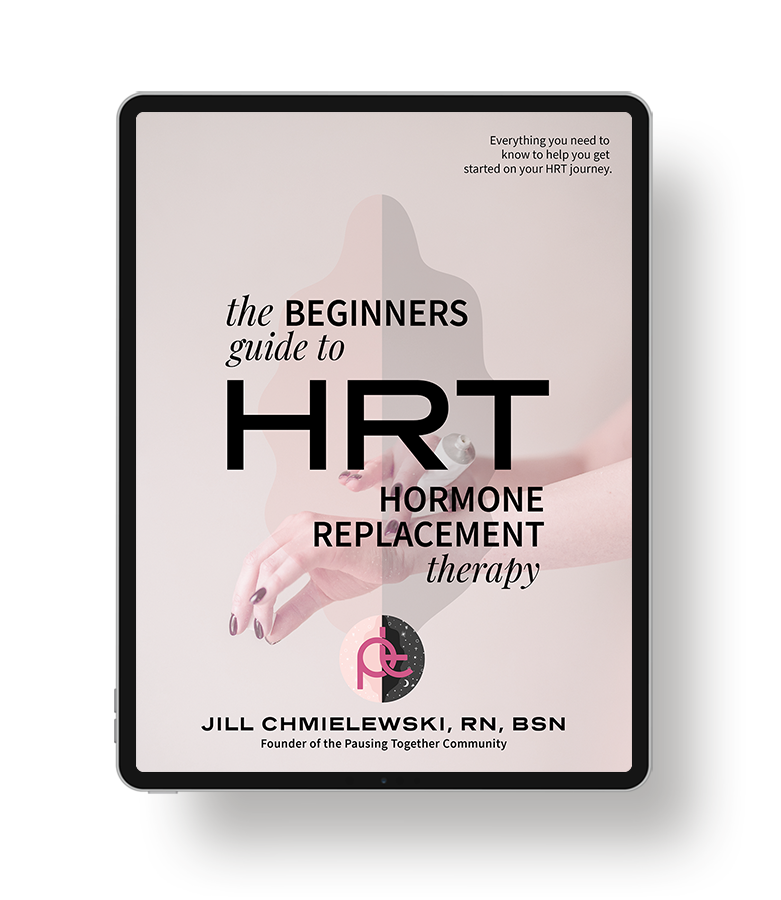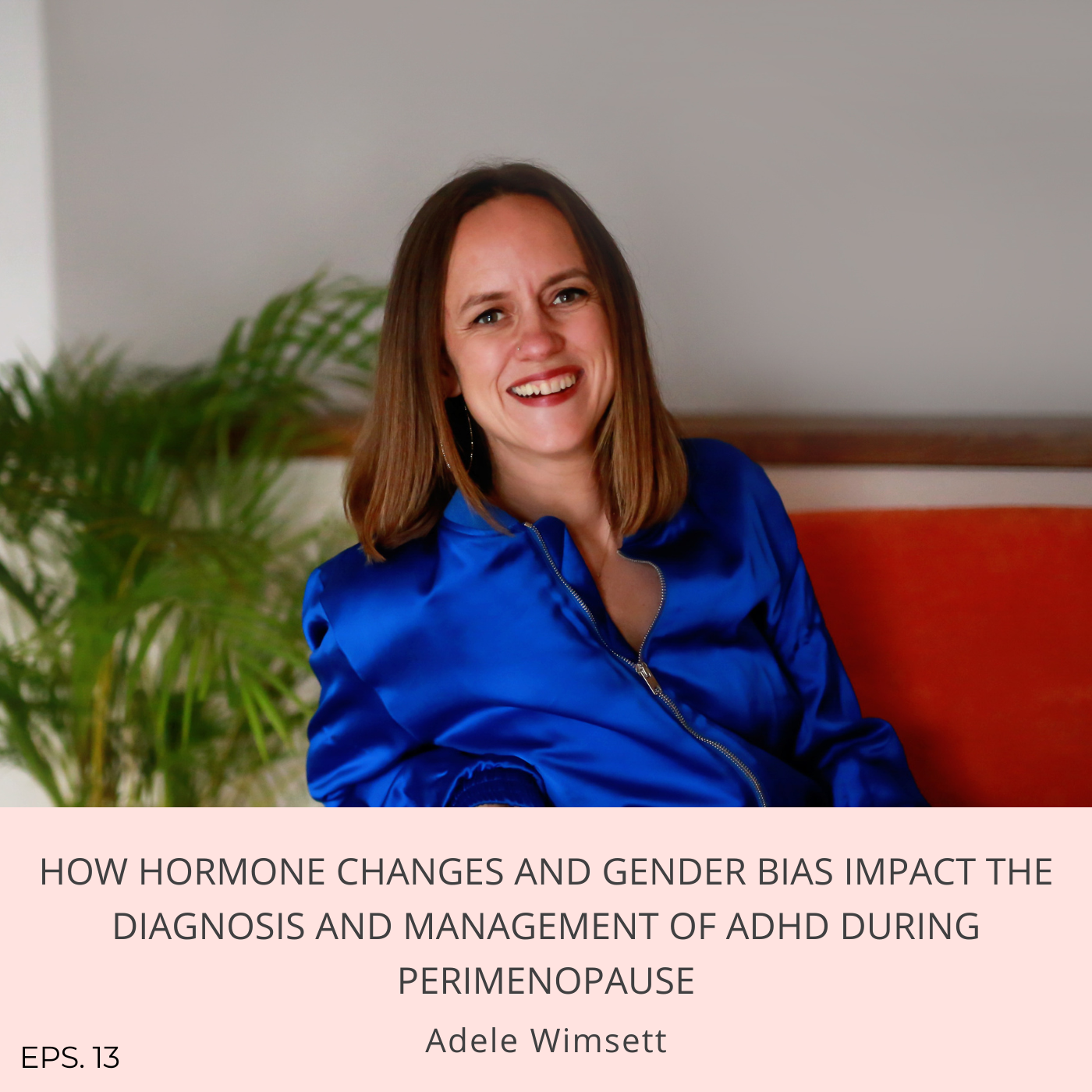Most women I talk to have either NO idea that perimenopause exists or they think it refers to the three or four months prior to menopause. The terms “menopause” and “perimenopause” tend to be used interchangeably, and I want to be sure that you understand exactly what it means to be in perimenopause so you know what to expect when you get there.
Menopause is the absence of a menstrual period for one year, while perimenopause is the time leading up to menopause.

While the medical community tends to focus on the changes in estrogen levels during menopause, it’s actually progesterone that goes through a more dramatic change in the body. We start to see progesterone changes well before menopause itself; in fact, it’s this drop in progesterone that tends to kick off perimenopause, and it can begin five to fifteen years before the onset of menopause.
Since the average age of menopause is around age 51, perimenopause can begin as early as age 35 in some women.
That probably doesn’t sound right to you, given the fact that many women in their mid-30’s are just beginning to start a family, but perimenopausal hormone changes CAN and DO begin in the early to mid-’30s for many women.
If you are like most women in your mid-30s, you probably DO NOT WANT to hear any version of the word “menopause” applied to you, even if it is perimenopause. You are just not there yet and I totally get it!
But I want you to remember that perimenopause isn’t a disease, a diagnosis or a syndrome. It is a very normal, natural and inevitable part of your female life cycle when your body is going through hormonal changes.
What happens during perimenopause?
In the simplest terms, your hormones are going through changes. In some ways, you might think of perimenopause as your second puberty. (I know, not something that you really want to hear right?)
When you first started puberty, estrogen was new to your body. You may have had a pretty strong reaction to estrogen at the time (ie. hormonal swings, moodiness, etc). That’s because your estrogen receptors were overly sensitive ~ they had never really been exposed to estrogen before ~ AND you weren’t yet making any progesterone, because you were not yet ovulating (progesterone is primarily made when you ovulate). Since progesterone balances out the effects of estrogen, you probably recall feeling pretty lousy as you entered into puberty.
Once your teenage bod was ovulating more regularly, your progesterone increased, which helped to balance out the effects of estrogen. Your periods were likely much more regular over time, and they weren’t as heavy or symptomatic as they had been when you first started getting your periods. (If you’ve never experienced this type of period bliss in your 20s and 30s, then you’ve likely had underlying hormonal imbalances for quite some time.)
During perimenopause, estrogen and progesterone levels change.
Contrary to what many women have been led to believe, progesterone is actually the first hormone to decline in perimenopause. In fact, most women begin to have some anovulatory cycles (cycles without ovulation) by age thirty-five, so it makes sense that progesterone begins its steady decline in your mid 30s, since progesterone is primarily produced from ovulation follicles after they have released an egg.
As you progress through your thirties and forties, your ovarian follicles become less responsive, and as a result, your body makes less progesterone. It’s almost as if your ovaries are operating off of a spotty Wi-Fi signal~ working some of the time but not ALL of the time. Hence, you begin to see a continuous decline in progesterone.
At the same time that progesterone is declining, estrogen tends to go on a roller coaster ride.
Estrogen can fluctuate wildly during perimenopause leading to a huge surge in estrogen, followed by a huge dip in estrogen. It’s what many health and wellness experts refer to as “estrogen chaos.”
Studies show that during perimenopause, estrogen can surge twice as high as it ever has, and then literally fall down to almost nothing. Yep, the estrogen swings in perimenopause can be that dramatic.
One thing to keep in mind about your hormones up to this point in time ~ your ovaries have primarily controlled the production of your sex hormones, progesterone and estrogen. But when you enter into perimenopause, your body shifts from ovarian control of your sex hormones to adrenal control of your sex hormones.
As your ovarian production of sex hormones goes down (remember they’re operating off of a spotty Wi-Fi signal), you have to rely on your adrenal glands to pick up the slack of sex hormone production. And that’s where women tend to run into problems.
Since the adrenal glands are primarily responsible for stress hormone production (think adrenalin and cortisol) among other things, it’s as if the adrenals have taken on a second job once the perimenopausal years begin. And if you’ve ever worked two jobs, you know that it can be a difficult balancing act.
This balancing act is one of the reasons that we see high-stress perimenopausal women (women who have been burning the candle at both ends) suffer more intensely than women living in a less-stressed state; the adrenal glands cannot possibly keep up with the hormonal production demands that are placed on them; hormonal imbalances are inevitable and perimenopausal symptoms become more severe.
Androgen hormones are changing too.
Androgen hormones (you’re probably most familiar with the testosterone) affects your liveliness, your sex drive, your mood, and your self-confidence. Androgens can be converted into estrogen too ~ yep, hormones can and do convert into other hormones (a discussion for another time).
Androgens often peak in your early adult years, and then they tend to gradually decrease over time. But there is a blip during the perimenopausal window, where some adrenal androgens (DHEA and androstenediol) increase dramatically in response to the menopausal transition. What does this mean for you? Higher levels of these hormones can increase or exacerbate symptoms in perimenopause.
What are the symptoms of perimenopause?
So, what types of symptoms might you experience if you are in perimenopause?
The perimenopausal experience is unique for each woman. Your experience in perimenopause will vary dramatically based on diet, lifestyle, and genetics.
Symptoms of perimenopause may include any of the following:
- Achy Joints
- Acne
- Allergies
- Anger
- Ankle or feet swelling
- Anxiety and/or depression
- Backache
- Bloating
- Blood sugar imbalance
- Bone loss
- Breast tenderness
- Breast Sagging
- Crying for no reason
- Facial hair
- Fatigue
- Feelings of being crazy
- Fibrocystic breasts
- Hair loss or thinning
- Headaches
- Heart palpitations
- Heavier periods
- Hot flashes or night sweats
- Hypothyroidism
- Irritability
- Leg cramps
- Low sex drive
- Memory or focus issues
- Mood swings
- Muscle weakness
- Shorter or longer menstrual cycles
- Skin aging and dryness
- Skin itching
- Skin spots (also known as liver spots)
- Sleep disruption
- Urinary incontinence
- Urinary tract infections (also known as bladder infections)
- Uterine fibroids
- Vaginal dryness
- Water retention
- Weight gain (especially in the midsection)
- Worsening PMS
Keep in mind that your symptoms may change throughout the perimenopausal years, a reflection of what is happening with your hormones at that particular point in time. Since circulating estrogens don’t really begin to dramatically change until one or two years prior to that actual “menopausal” milestone, a woman may experience new symptoms just prior to reaching menopause.
What about period craziness?
With the estrogen highs and lows that I described earlier, you can see how one month a woman may have just enough estrogen to build up a uterine lining (hence she’ll have a period) and the next month, her estrogen drops and she doesn’t. For some women, there can be a period of some menstrual craziness, where they may skip a menstrual cycle for six months and then have a really heavy one three months in a row, or have a month where they have two periods in a row and then none for four months. For the vast majority of women, these are normal symptoms of perimenopause. There’s nothing dangerous happening ~ it’s just a symptom of hormonal chaos.
What can you do about miserable perimenopausal symptoms?
Believe it or not, you don’t have to suffer miserably through the perimenopausal years, or wait until you’ve reached menopause to begin treatment for symptoms. Hormone replacement therapy is the gold standard treatment to address pausal symptoms. Replacing declining hormones with bioidentical hormones will help reduce pausal symptoms and provide a whole host of other protective benefits as well. If you aren’t a candidate for hormone replacement therapy or you are interested in other remedies to alleviate those pesky symptoms, then talk with your doctor about options.
A couple of things to keep in mind:
- A family history of breast cancer or a personal history of breast cancer does not necessarily preclude a woman from using HRT. Every woman is different, with a unique history, a unique set of genes, and a unique lifestyle. Clinicians who are highly trained in menopause medicine and anti-aging medicine can help a woman weigh the benefits and risks of HRT and other treatments. If hormone replacement therapy is not the right choice for a woman, there are alternative options to consider.
- The way you care for your body in your ‘20s, ‘30s, and ’40s directly impacts the health of your body during perimenopause and beyond. I find that if a woman has not addressed underlying hormonal issues and other long-standing health issues, perimenopause will generally intensify and pull into a pain point the issues that her body’s been trying to persuade her to address for years.
- There is no supplement, product, or treatment in the world that will provide a long-term “fix” for symptoms if you aren’t working on the food and lifestyle pieces as well.
To learn more, pick up a copy of the newly updated Peri to Menopause Roadmap now.
Happy Reading!
Xo Jill





